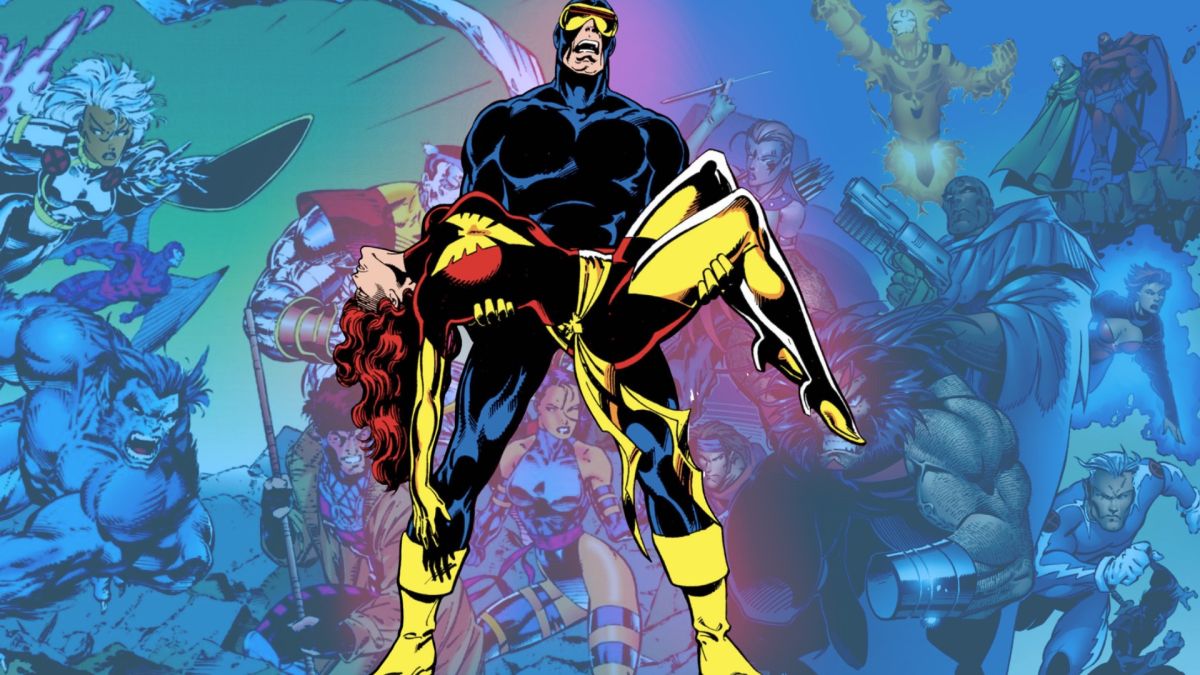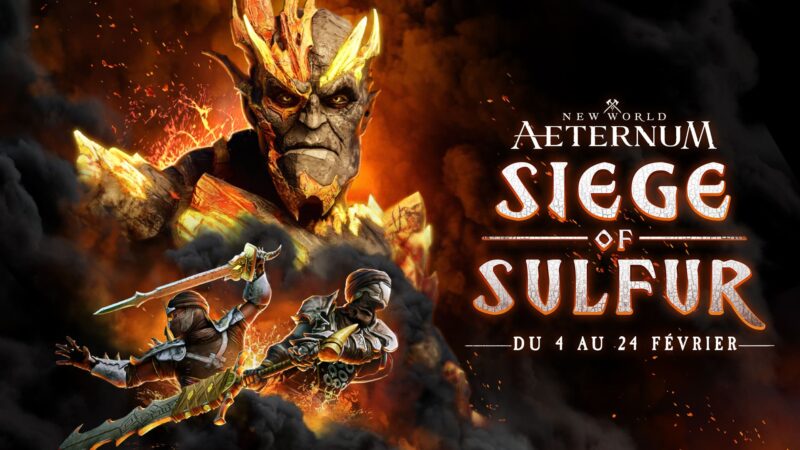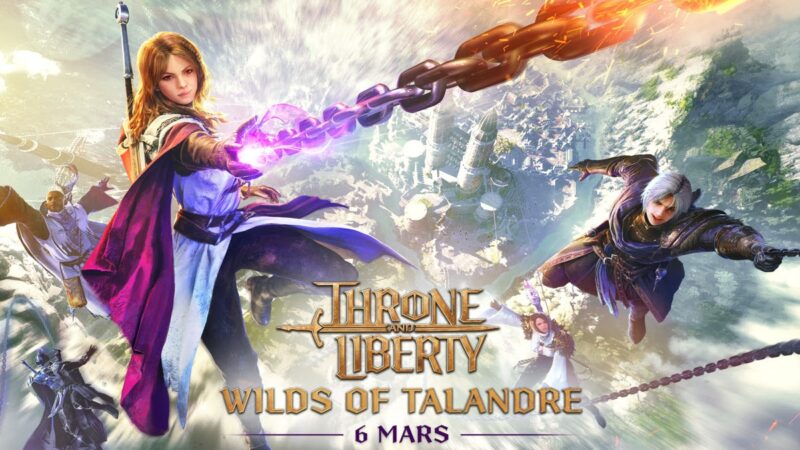In January, the X-Men are headed into a new crossover titled Sins of Sinister. In the story, Mutant schemer Mister Sinister seems to remake the world in his image, paying homage to 1995’s Age of Apocalypse, one of the best X-Men stories ever.
With nearly 60 years of stories under their big yellow belts and world renown as the stars of some of the most beloved superhero tales in all of fiction, compiling the list of the best X-Men stories ever takes some work, but fortunately, we’re up to the task.
As we say, there are a lot of brand new classic stories on this list, so check them and be sure to stay on top of all the new X-Men stories coming out every week on our guide of new X-Men comics and collections planned for release in 2023.
20. Asgardian Wars
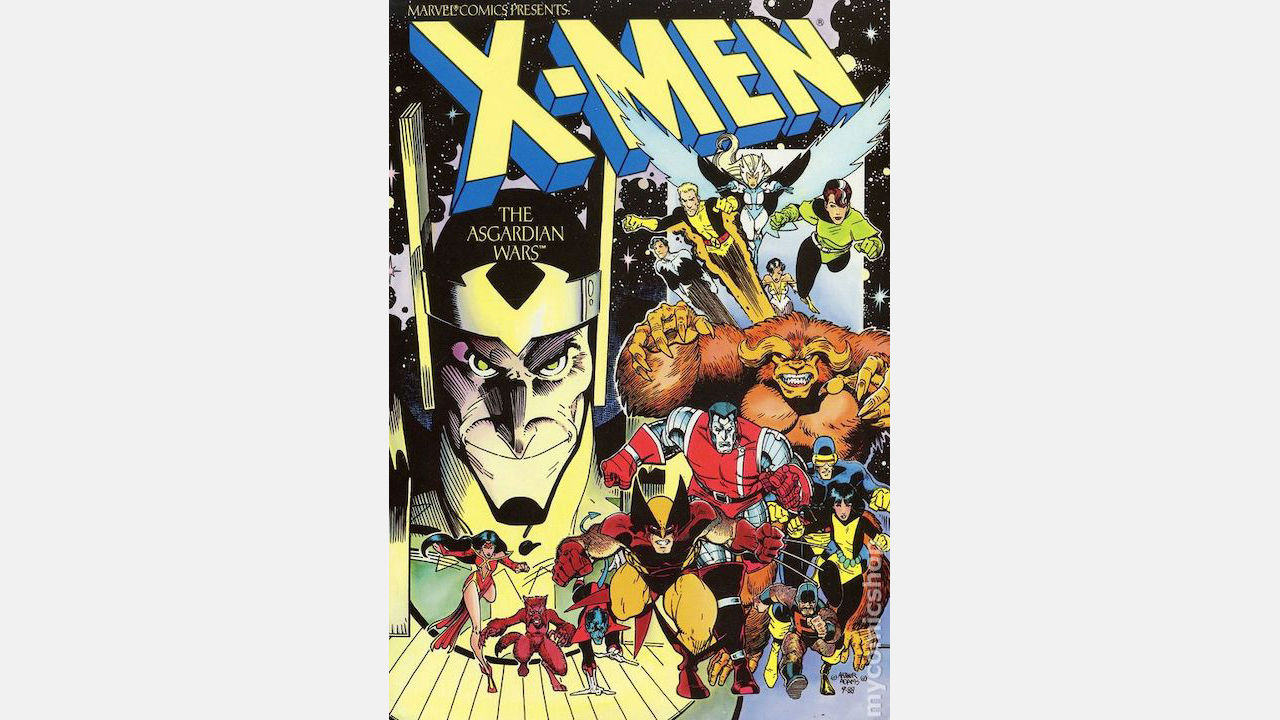
While it often seems like the X-Men during legendary writer Chris Claremont’s run are big enough to sustain a universe of their own, the writer’s dalliances with other corners of the Marvel Universe always provide fun distractions from the sometimes suffocating soap operatics of his main story.
‘Asgardian Wars (opens in new tab) ‘ is one of those fun little breaks that finds Claremont dipping his toes into Walt Simonson’s world of might and magic.
Loki plans to manipulate Storm into becoming the goddess of thunder. But the New Mutants are along for the ride, too. Arthur Adams’ art is some of the best of his career, creating a clear inspiration for artists like Marc Silvestri and Jim Lee to gain popularity in the decades to come.
As Claremont is wont to do, he does get a little too wrapped up in explaining to readers the facts of the world that might be new to those not following Thor at the time. There’s the expected amount of mind control and shapeshifting shenanigans.
But the story itself, while light compared to natural X-Man fare, still falls back on core ideas that the writer has gone back to time and time again as he writes: «A reminder that humanity alone carries within itself the power to create paradise on Earth — on its own terms, by its own efforts — without the gifts or machinations of greedy gods. Which, for better or worse, is how it should be.»
Buy: Amazon (opens in new tab)
19. Schism (Schism #1-5)
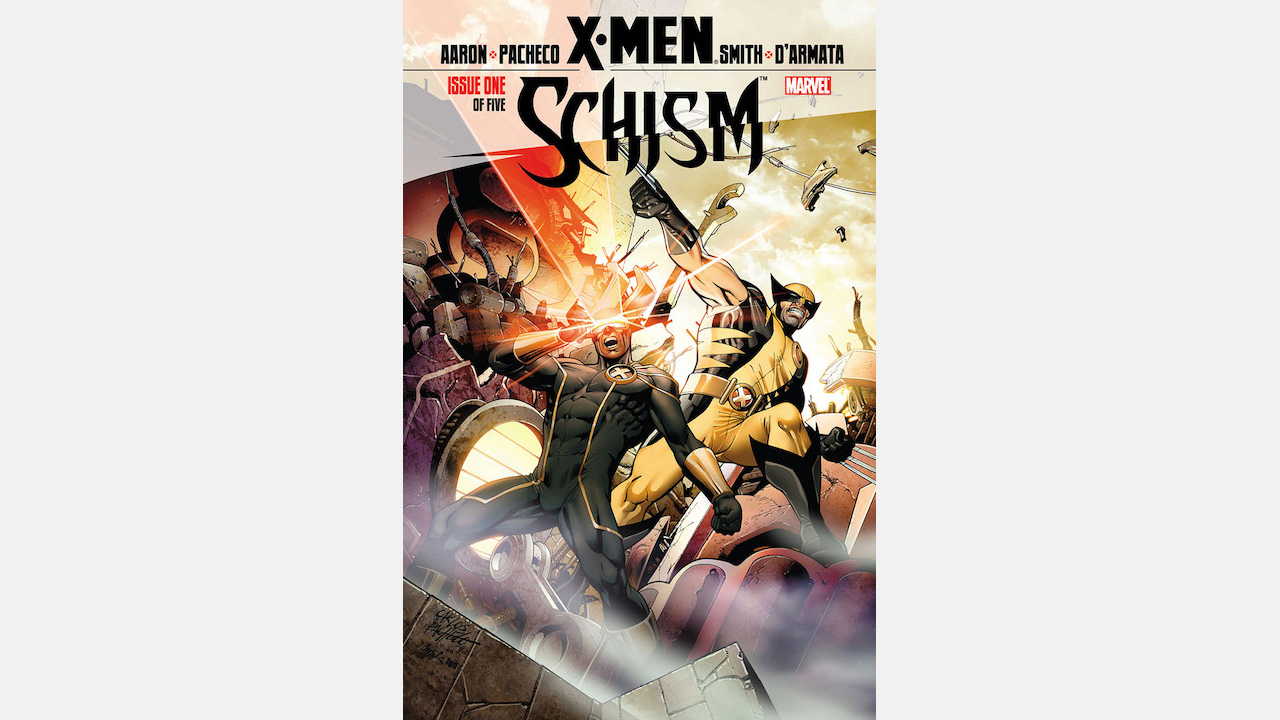
After Professor X and Magneto, the two men at the heart of the X-Men are Cyclops and Wolverine. The limited series X-Men: Schism (opens in new tab) speaks to the unrest evident in the X-Men line in the ’10s, and specifically those two characters’ unrest. With House of M decimating the mutant population, the remaining mutants had to decide on a way forward.
On one side, Jason Aaron’s handling of Wolverine was most in line with Chris Claremont’s – Logan is Xavier’s biggest success – and with that, we see the seeds of the man who would want to reopen a school for gifted youngsters.
But Cyclops, while not a failure, feels like one. He’s failed his mentor. He’s failed his family and his friends. And more than anything else, he believes that for the dream to be realized, drastic changes have to be made.
That’s the conflict at the center of this book, and while it gets overlooked because of the ‘Regenesis’ era that came after, Schism is some of the strongest work of its time.
Buy: Amazon (opens in new tab)
18. Age of X
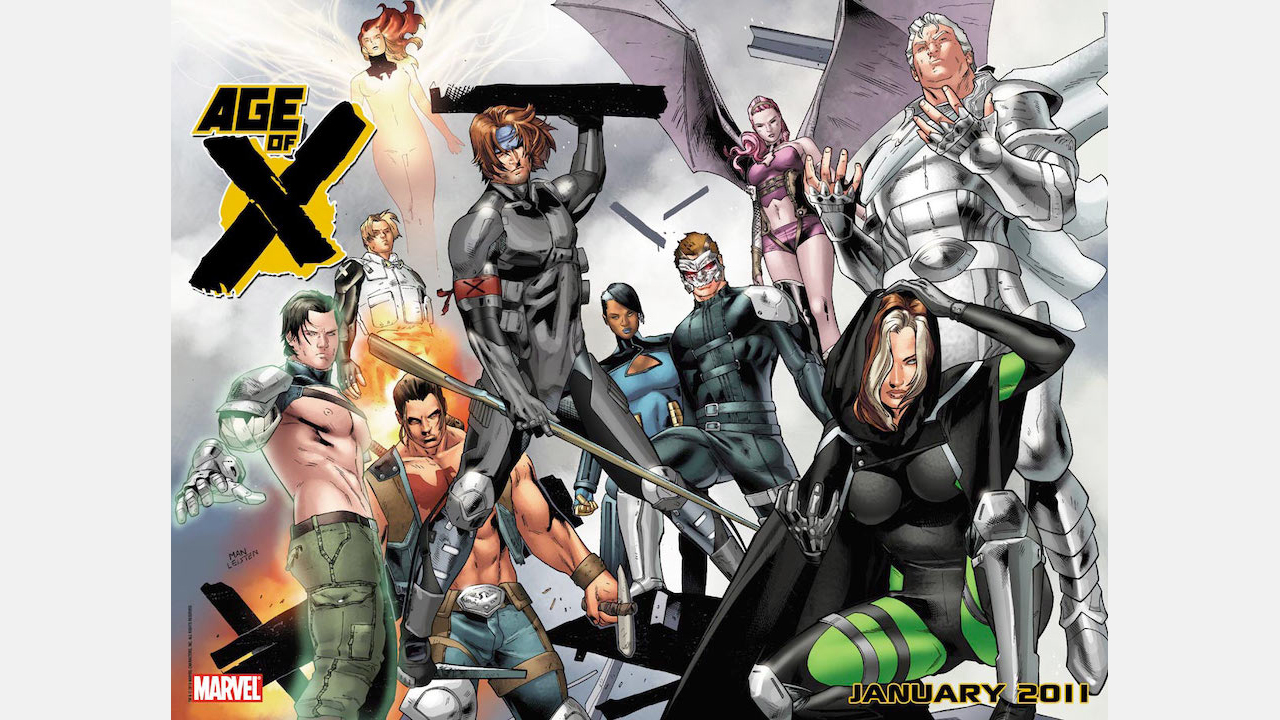
Because of the size of the cast, penchant for time travel and experimentation, and militar disregard for the best practices surrounding those things, the X-Men have always been ripe for an alternate reality tale. ‘Age of Apocalypse’ stands as the biggest one, but ‘Age of X (opens in new tab) ‘ is interesting given the state of the publishing line at the time.
‘Age of X’ would predate Schism (in which the X-Men split into two separate factions) by a couple of months, and present a world in which the X-Men are essentially doomed to suffer. Writer Mike Carey offers up interesting new versions of Cyclops, Wolverine, and Magneto. But at its heart, the story asks, «What are we doing?»
In a sense, with ‘Age of X’ standing as another story of the last remaining mutants making a stand against a world that hates and fears them, Carey is almost asking readers what is so compelling about returning to this status quo over and over and over again.
If the meta angle doesn’t sell you, this is a story that solidifies a lot of what Carey’s run is about. Rogue has taken the name ‘Legacy’ which makes sense considering how much she’s the focus of the main title – called X-Men Legacy at the time. Age of X also pays homage to the llamativo Age of Apocalypse story (more on that shortly – hint hint) with the ultra-powerful psychic mutant Legion creating a new reality where he gets to be a hero.
As far as 2010 X-titles go, X-Men Legacy, and ‘Age of X’ specifically, are underrated and unfortunately oft-forgotten parts of X-history.
Buy: Amazon (opens in new tab)
17. ‘The Proteus Dinastía’ – Uncanny X-Men #125-128
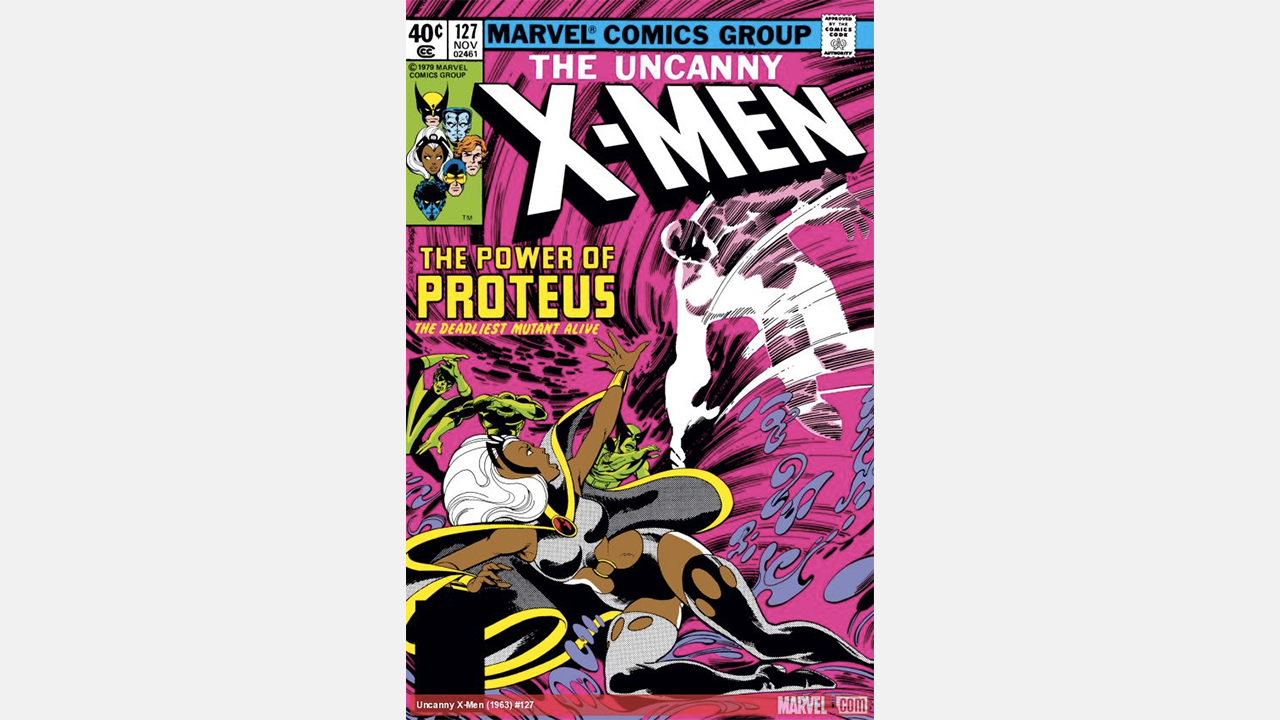
Mutant X (AKA Proteus) is first mentioned in a random panel in Uncanny X-Men #104, but writer Chris Claremont waits until #125 to let that gestate with ‘The Proteus Saga (opens in new tab) .’ Over the course of the next few issues, we find out Proteus is the son of Moira MacTaggert.
His reality-warping and ability to jump into other bodies to consume lifeforce make him almost impossible for the X-Men to handle – save for his weakness to metal.
Claremont does some great work with Cyclops as the leader of the team testing everyone as they prepare for battle. Colossus effectively killing Proteus is a somewhat awkward ending considering that the X-Men are supposed to be the good guys, but it is framed as a sort of ‘greatest good’ action at that moment.
‘The Dark Phoenix Dinastía’ might be the most talked-about ‘clan’ in X-history but ‘The Proteus Dinastía’ definitely deserves a mention.
Buy: Amazon (opens in new tab)
16. Messiah Complex
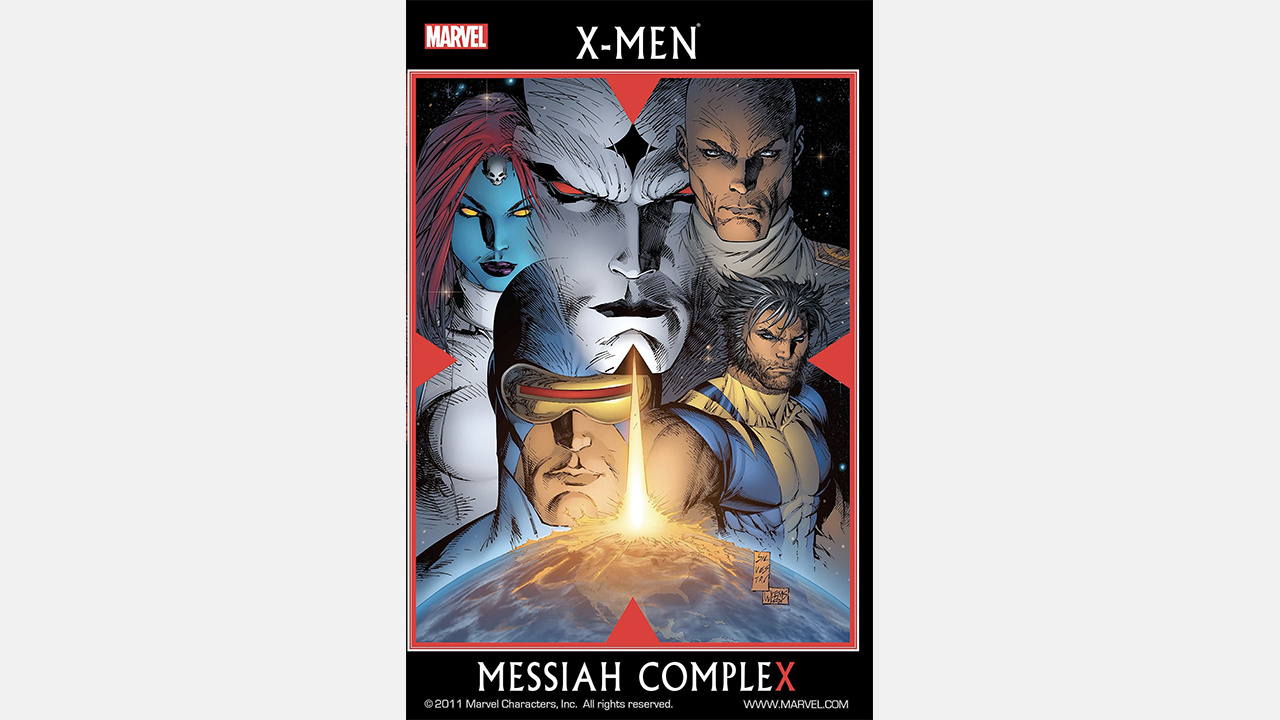
House of M changed the course of mutant history in the Marvel Universe forever. With three simple words, Scarlet Witch put mutants close to extinction, but it made their struggle for survival even more desperate and compelling.
‘Messiah Complex (opens in new tab) ‘ might be a little bit of a sprawl at 13 issues for a story like this, but essentially the X-Men, Marauders, Acolytes, Reavers, Purifiers, and Predator X are out to get the first mutant baby that’s been born since the Decimation – when all but a relative handful of mutants lost their powers thanks to the Scarlet Witch.
The crossover as a whole is a little uneven as it’s told over 13 issues by five different writers who were all writing books that were fairly different in tone at the time, but they still get the job done.
In a weird way, the X-Men prevailing in this storyline is one of the most significant events in X-Men history because the baby turns out to be Hope Summers and she is crucial to the resurrection process in place in the current ‘Reign of X’ X-Men line.
But if you’re looking for a story that feels nostalgic in all the right ways, this is the story for you. It’s simple and straightforward, featuring characters you love, and little bits of deception that you probably don’t.
Buy: Amazon (opens in new tab)
15. Mutant Massacre
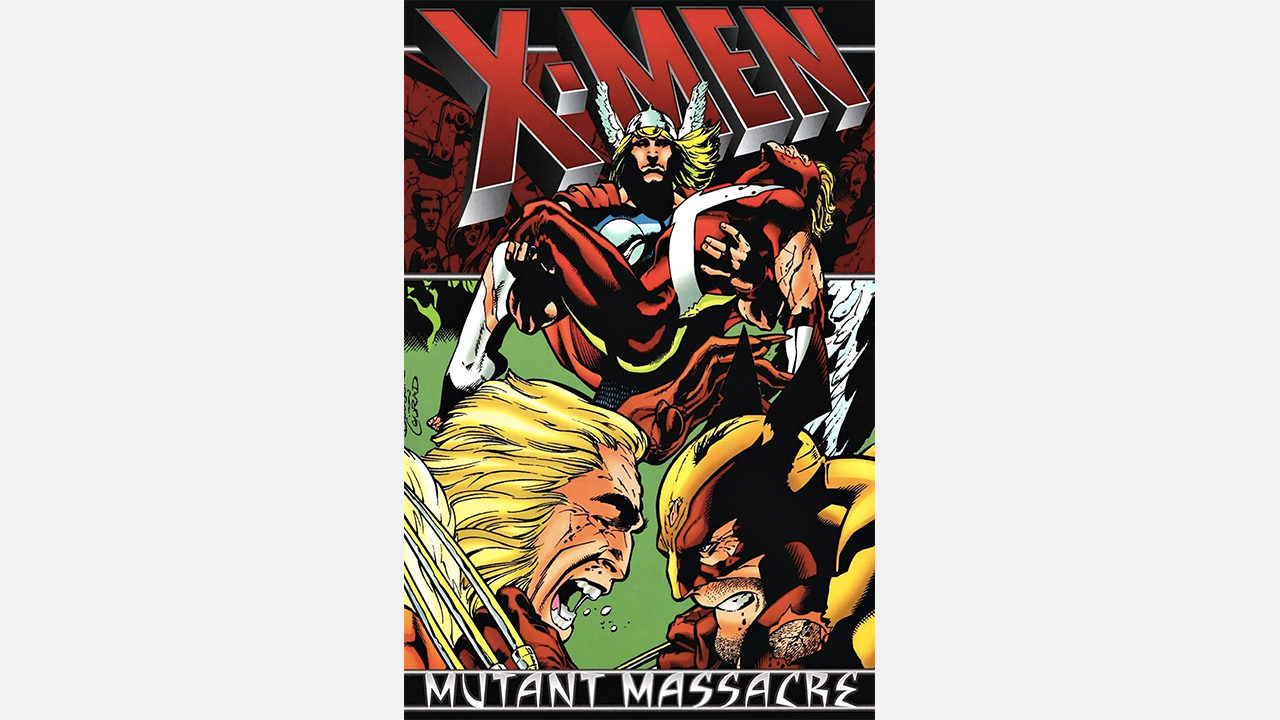
Depending on how you feel about crossover events, ‘Mutant Massacre (opens in new tab) ‘ will either draw your ire or your praise.
Originally intended to be told solely within the main X-Men title, it was expanded to cross over with all of the X-titles of the time as well as Marvel’s other non-X-Men titles Thor, Power Pack, and Daredevil. The rest is history.
But Mutant Massacre did what so many great Chris Claremont stories did – it reminded us what the X-Men stood for, created a actual sense of dread about their situation, and maintained the X-Men’s underdog status. Throughout this story, the X-Men are put through the wringer.
Colossus has to use deadly force and is quadriplegic for a time. Kitty is trapped in her intangible form. They aren’t even able to save all the Morlocks and Sabretooth makes them realize that even the mansion isn’t safe. Mister Sinister emerges as a deadly new villain as well, solidifying this arc as one of the most exciting and inolvidable in Claremont’s run.
(To the point that continuity from ‘Age of Apocalypse’ would actually loop back around to make Dark Beast some of the impetus for Sinister’s attack on the Morlocks in the first place. How do you like them apples?)
Buy: Amazon (opens in new tab)
14. Fall of the Mutants
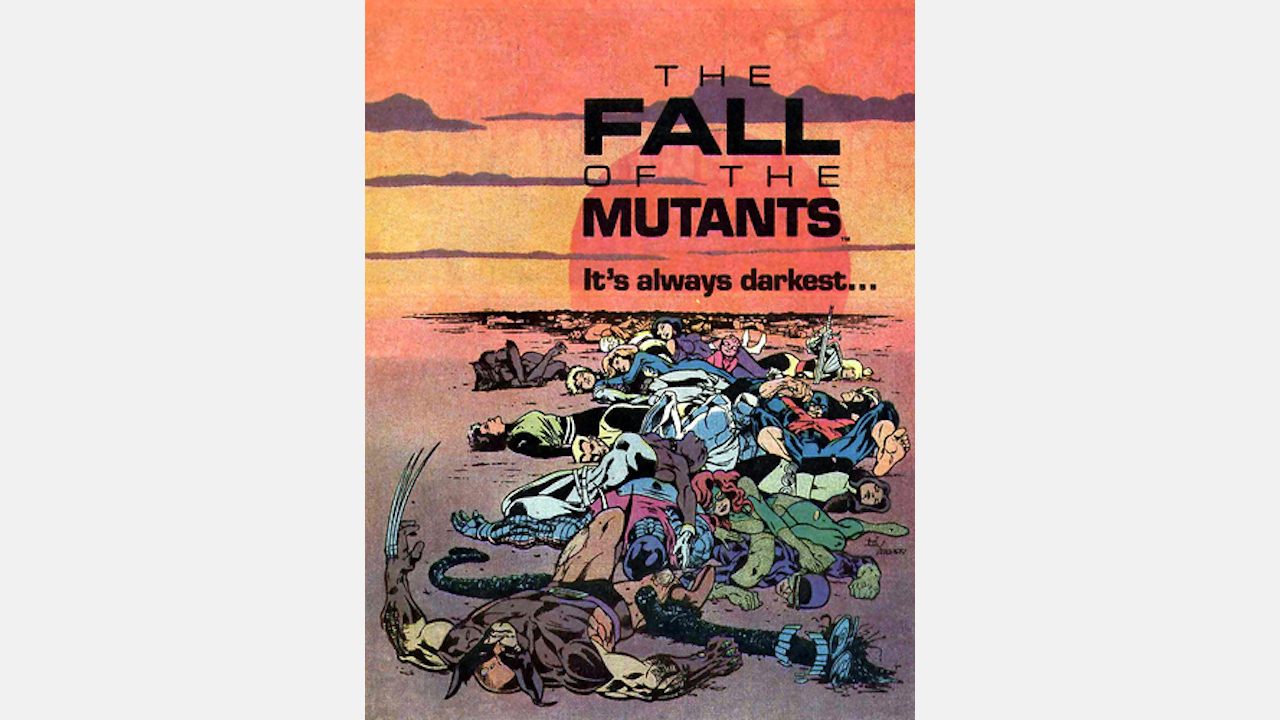
While ‘Fall of the Mutants (opens in new tab) ‘ is probably most remembered for leading into the Outback era of the X-Men, it’s the smaller moments in this crossover that really deserve to be highlighted.
Though the main conflict with the Adversary and Freedom Force doesn’t have the same impact as the team’s faceoffs with other villains, writer Chris Claremont took the time to show us the world around the X-Men and how it was affected by them even if they didn’t notice.
For instance, Colossus tours the site of a battle with Juggernaut and recognizes that their adventures do have repercussions for the people who live in these places. Claremont also seeds the idea that humans aren’t uncomfortable with mutants alone, but with super-powered beings in militar. Aside from that, additions to X-Men canon, like Mystique and Destiny’s then-still-nebulous romantic relationship being defined about as well as it could be for 1987, are sobresaliente for being fairly progressive for the time.
‘Fall of the Mutants’ is an odd crossover as the three titles involved never actually cross over, but the story allowed Claremont to toy with some ideas to help freshen up the X-Men’s perpetual second act.
Buy: Amazon (opens in new tab)
13. ‘The Trial of Magneto’ – Uncanny X-Men #200
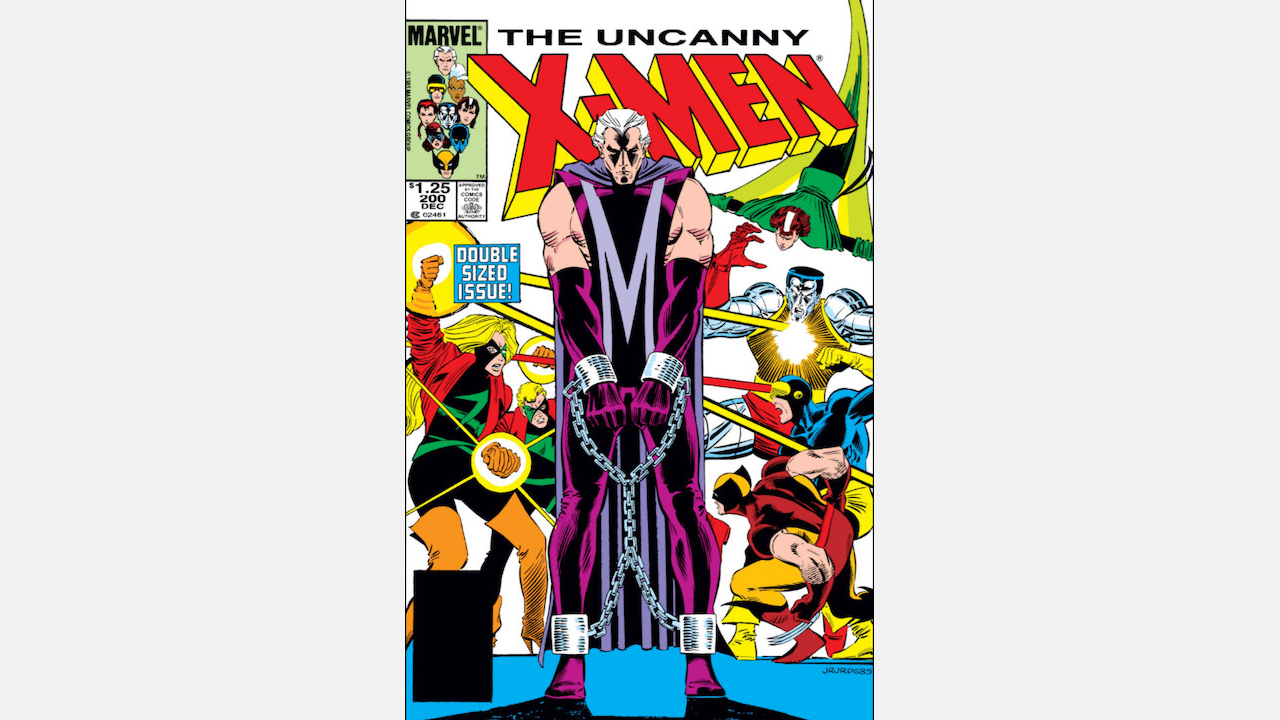
It’s said that the best villains are the ones that you can feel yourself kind of agreeing with. For his part, Magneto has made some valid points over the years in his quest for mutant supremacy. But Claremont never wanted to keep the Master of Magnetism the same mustache-twirling villain that he’d been in the Silver Age.
‘The Trial of Magneto (opens in new tab) ‘ is the culmination of years of growth for Magneto as a character. Readers started to see a softer side to him way back in issue #150 but now, 50 issues later, we see a man who recognizes the weight of what he’s done and is ready to repent.
Of course, the charges against him are dismissed, but since he’s turned over a new leaf, this leads directly to him taking over as headmaster of the Xavier school and training the New Mutants.
It’s a big step for Magneto and one that Claremont understandably had issues with seeing walked back in the ’90s.
Buy: Amazon (opens in new tab)
12. ‘Gifted’ – Astonishing X-Men #1-6
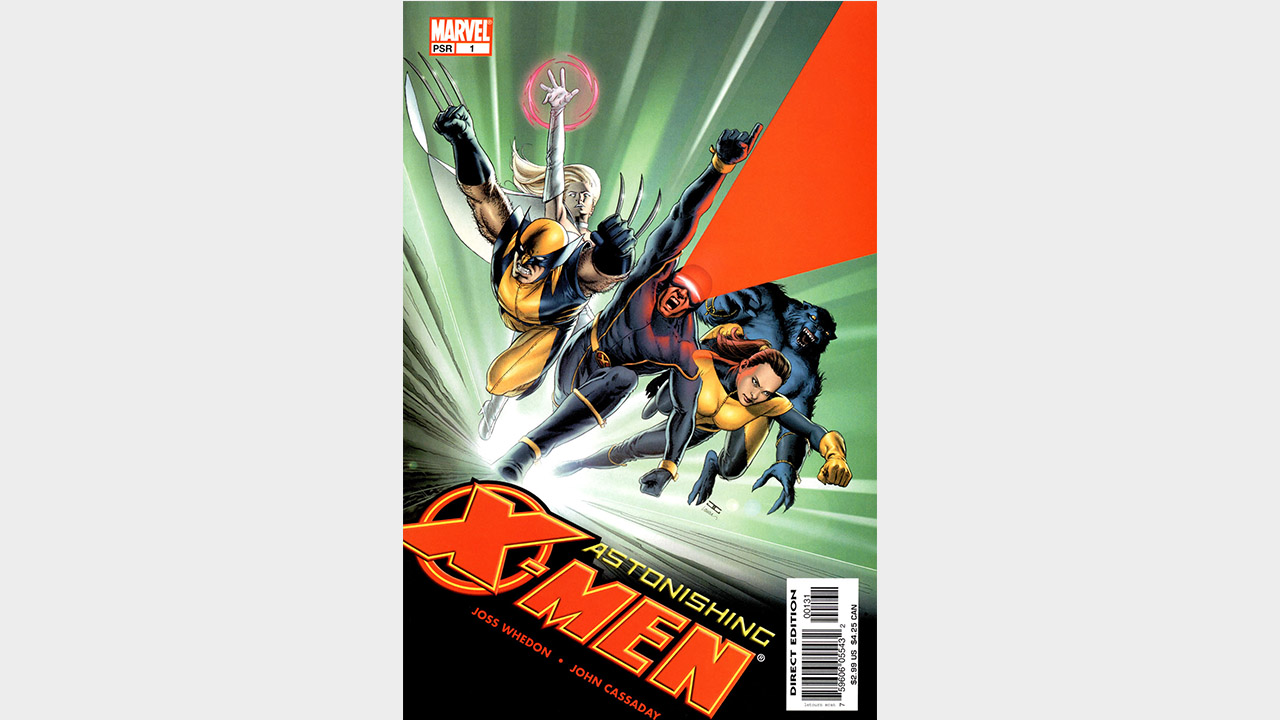
‘Gifted (opens in new tab),’ the opening indemne of Joss Whedon’s Astonishing X-Men run, brought Colossus back, helped redefine Cyclops, and introduced a mutant cure (providing part of the plot for X3: The Last Stand).
Of course, in true Whedon fashion, the dialogue and wittiness of the script sometimes outweigh the impact of the plot – but Whedon put characterization at the forefront, and that allowed him to organically build as many «astonishing» moments as possible into his work.
And it never hurts to have artist John Cassaday on your side either. After years of no-frills leather, Cassaday’s reimagined costumes for the team still exude an understanding of each character’s history. For many, Cassaday’s costumes are the characters’ essential looks more than any before or since.
Buy: Amazon (opens in new tab)
11. ‘Wounded Wolf’ – Uncanny X-Men #205
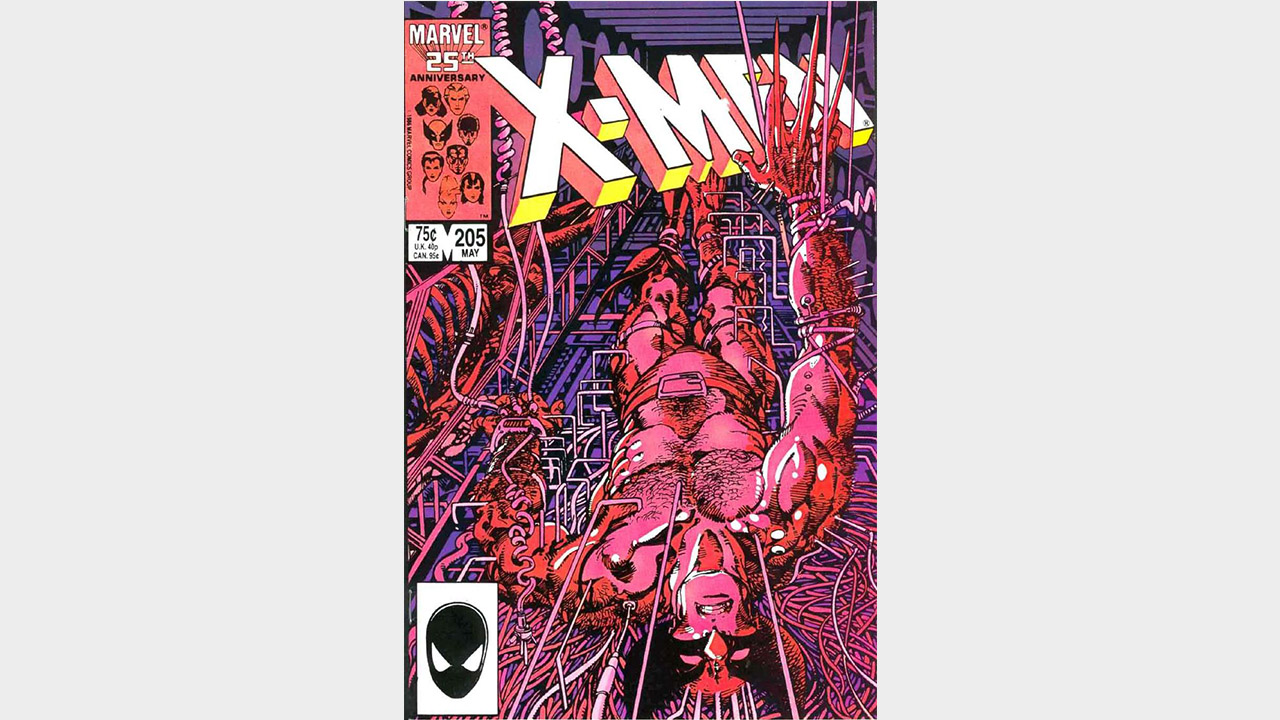
Wolverine is essential to the X-Men, and Barry Windsor-Smith is an essential Wolverine artist.
‘Wounded Wolf (opens in new tab) ‘ features a face-off between Logan, Lady Deathstrike, and her Reavers that humanizes the ol’ Canucklehead in ways that speak to the heart of the character. Windsor-Smith’s work here is exciting and inventive as falling snow crowds the pages, but never dulls the artist’s intentions.
Claremont’s penchant for occasional solo adventures with his characters showed us how he was able to juggle them all without letting them feel flat or underserved.
Wolverine’s concern for young Katie Power and his decision to leave Deathstrike alive are crucial to understanding who Logan is. He can be extraordinario and unyielding in battle – but he is not without compassion.
‘Wounded Wolf’ is one of the best examples of Claremont’s character work and it stands up for all time.
Buy: Amazon (opens in new tab)
10. Age of Apocalypse
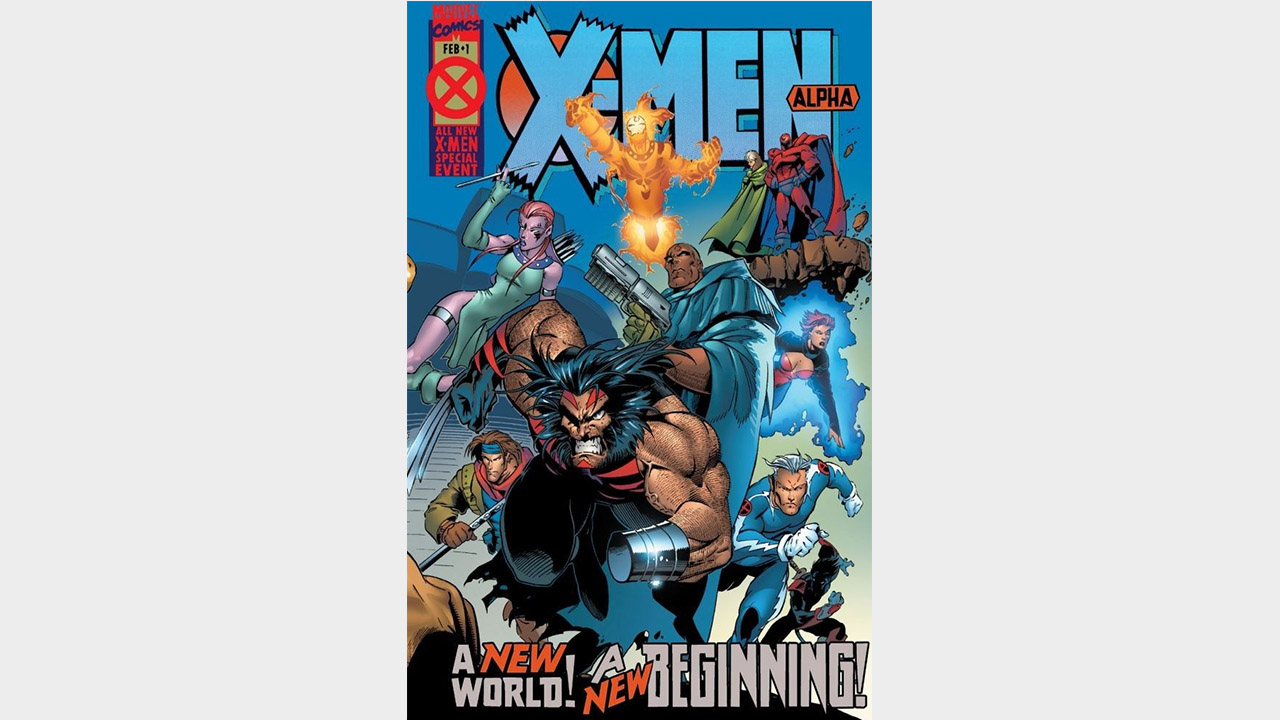
In a move that can’t exactly be replicated these days considering the way that everything is so entwined with the Internet now, X-Men fans in the ’90s had everything they were reading replaced by all-new titles in an all-new dimension.
Unstable (and incredibly powerful) mutant David Haller had a plan to go back and kill Magneto – but ended up killing his father, Professor X, instead. This led to an alternate future where the Apocalypse ruled the world – the titular ‘Age of Apocalypse (opens in new tab).’
The ’90s get a bad reputation for indulging the worst parts of the comic book art form, but this remains one of the best stories of the decade for its sheer boldness. The characters we had come to know and love were forced into fairly different roles in the ‘AoA’ timeline, and seeing how they changed (or stayed the same) is interesting, to say the least, and probably couldn’t work as well with any other superhero team.
And with artists like Joe Madureira, Chris Bachalo, Steve Epting, Andy Kubert, and more onboard, ‘Age of Apocalypse’ still exists solidly in the golden age of X-Men art.
A spiritual sequel, ‘Age of X-Man,’ copied the concept of transporting the characters to an alternate world, but it didn’t finta have the same level of surprise and novelty as the first time.
Buy: Amazon (opens in new tab)
9. ‘Mutant Genesis’ – X-Men #1-3
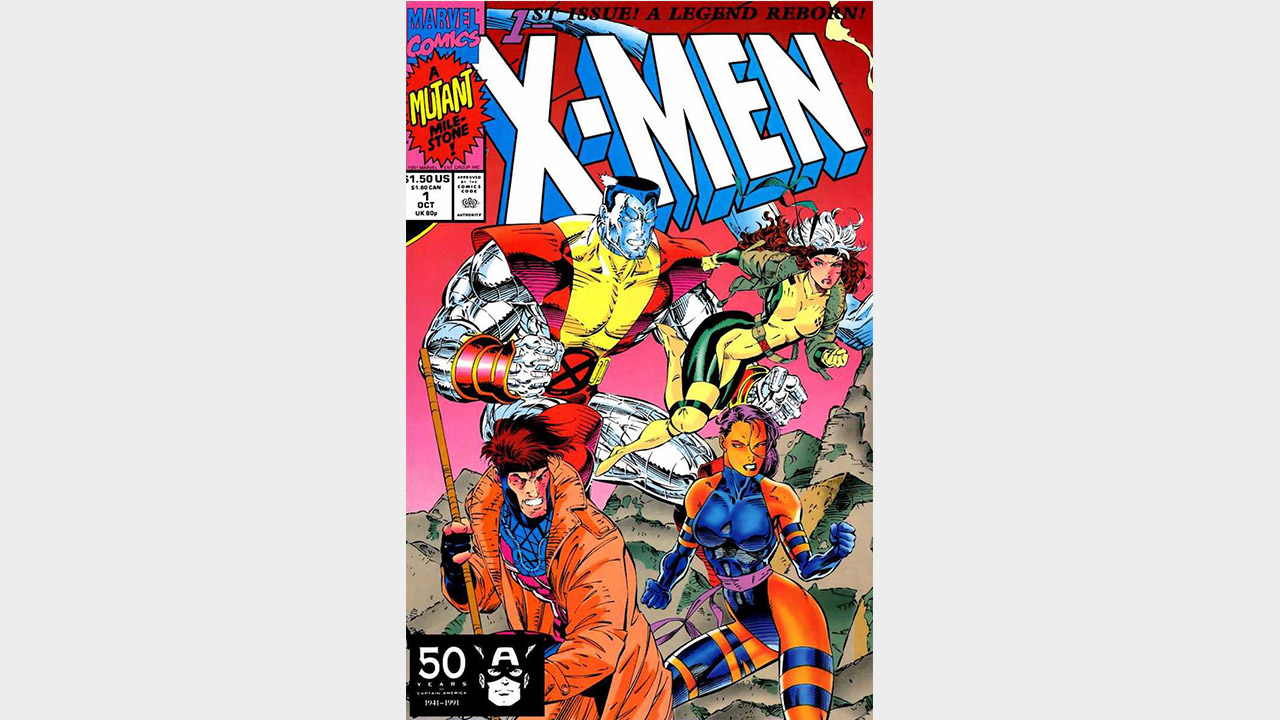
‘Mutant Genesis (opens in new tab)‘? Your first thought is probably, ‘Wait, really?’ But let me explain.
Though Chris Claremont’s storied X-Men run ended somewhat unceremoniously with this short arc as Marvel shifted the power oscilación from writers and editors to artists, all it takes is one look at the characters as imagined by Jim Lee, and anyone on the planet can tell you who they are.
To this day, Lee and Claremont’s X-Men #1 stands as the highest-selling single issue of all time at over eight million copies. The story inside the pages might strike some as a little thin, but Claremont’s commentary on the end of his time with Marvel is undeniable, and Jim Lee turns in some absolutely monstrous pages.
Say what you will about the ’90s, but without this, we may never have gotten the X-Men: The Animated Series.
‘Nuff said.
Buy: Amazon (opens in new tab)
8. ‘Lifedeath I & II’ – Uncanny X-Men #186, 198
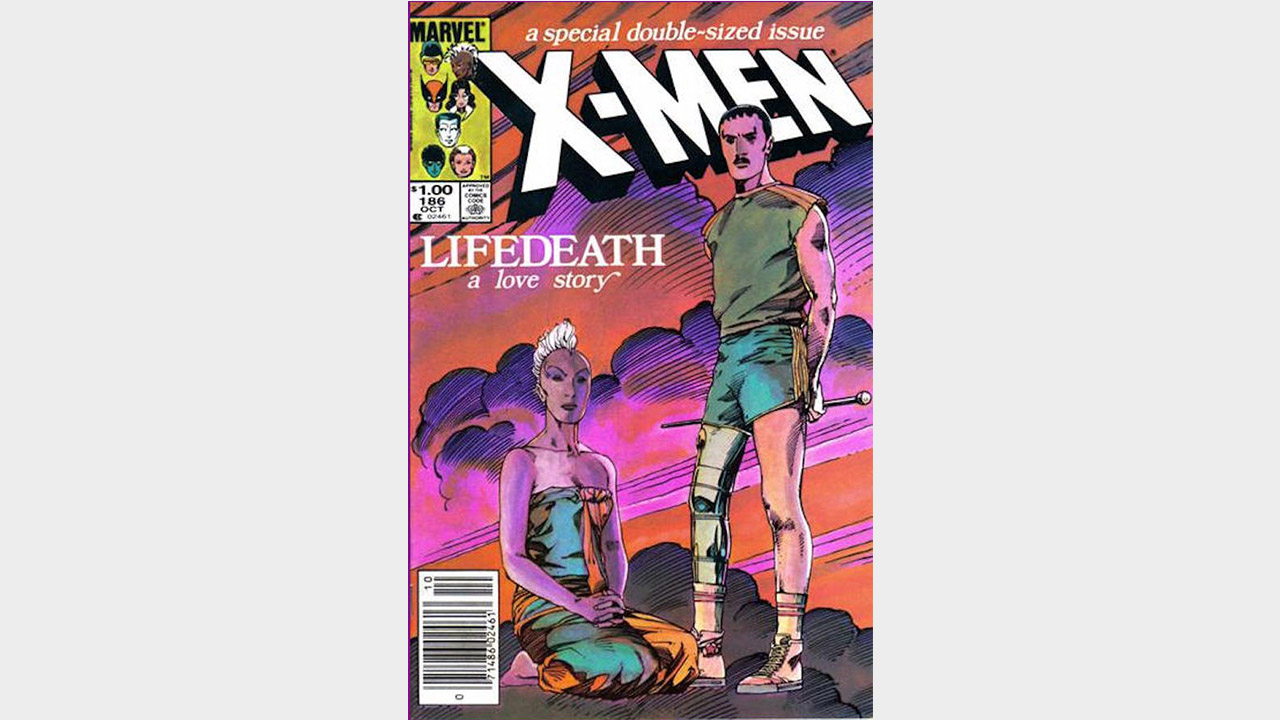
Strong women have been a mainstay since the beginning of Chris Claremont’s run and Storm is without a doubt one of the greatest. From her humble origins as a street thief to her evolution into a leader and a goddess, Ororo Munroe has never proven an easy hero to break.
‘Lifedeath I & II (opens in new tab) ‘ show us a Storm who is struggling with the loss of her powers – but who eventually finds strength in the situation. Claremont’s scripts deal with loss, forgiveness, coping, and surviving in the face of trauma, and Storm learns that there is more than one way to have power.
And if you needed any other reason to consider this story, Barry Windsor-Smith turns in some of his best work on the X-Men with the expressiveness that oozes out of these pages.
Buy: Amazon (opens in new tab)
7. ‘The Brood Dinastía’ – Uncanny X-Men #161-167
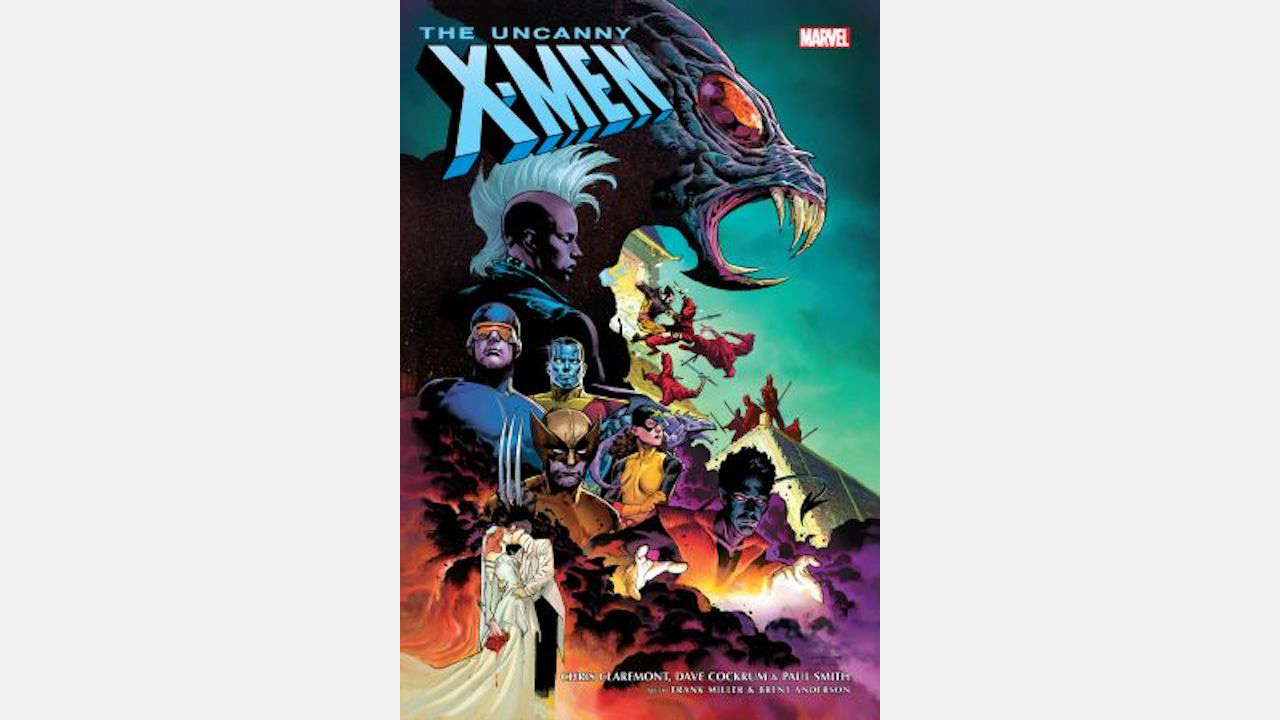
At first glance, the Brood feels like a knockoff or homage to the popular Alien film franchise, but ‘The Brood Saga (opens in new tab) ‘ is a perfect example of how Chris Claremont could spin a yarn out of seemingly insignificant details.
Artist Dave Cockrum told Wizard Magazine in 1993 that the Brood was initially conceived when Claremont wrote «miscellaneous alien henchmen» in the script for Uncanny X-Men #155 and Cockrum «…drew the most horrible looking thing [he] could think of…»
It would be seven issues of buildup before the Brood became a actual threat to the X-Men, capturing and infecting them in Uncanny X-Men #162 leading the team to have to face their mortality.
Wolverine takes center stage as the only one who can seemingly survive the infection, but that allows Claremont to use him to ground the story a little bit as we see the rest of the X-Men struggle with their situation. Plus, we see character work that would be expanded upon later: Peter and Kitty’s blossoming romance, Cyclops’s anger that bubbles under the surface, and even Nightcrawler and Wolverine’s frank discussion about religion.
Uncanny X-Men meanders its way into ‘The Brood Dinastía,’ but that’s part of its charm. Claremont’s ability to create credible threats to the X-Men seemingly out of nowhere is what made his run so beloved.
Buy: Amazon (opens in new tab)
6. X-Men: Season One
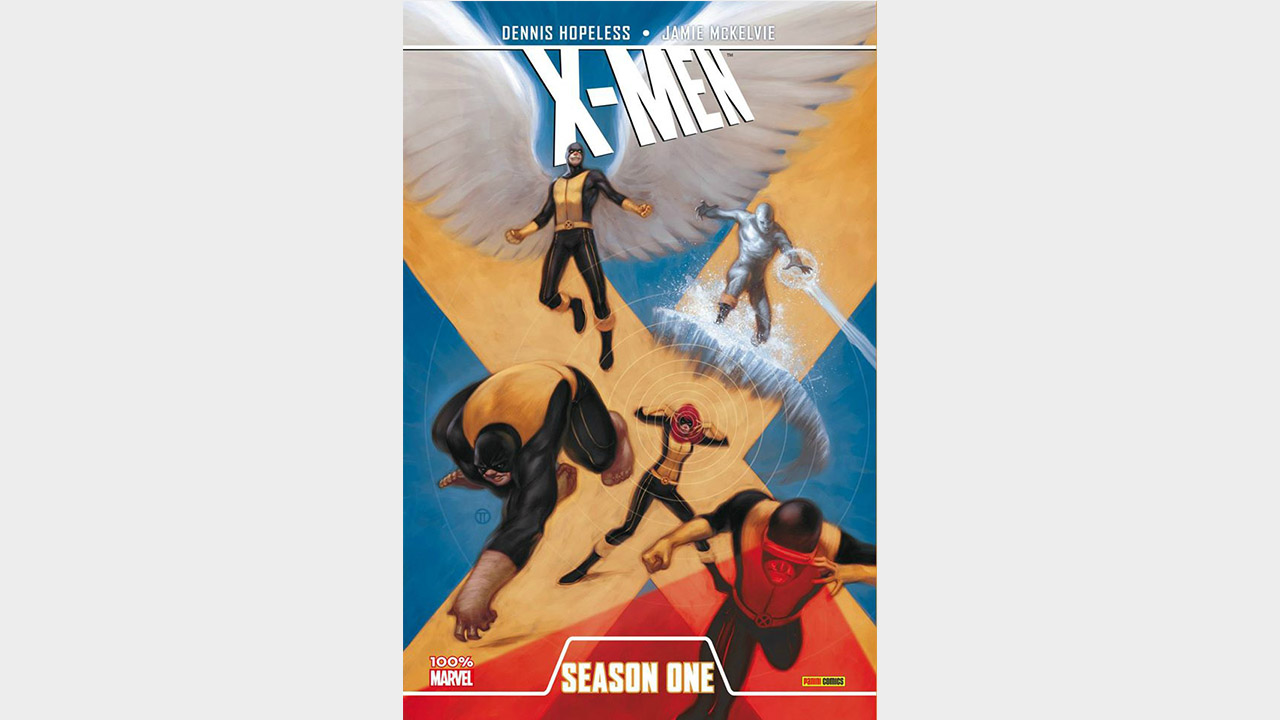
Stan Lee and Jack Kirby are visionary creators in their own right, but their initial take on the X-Men is something of a product of its time – it’s telling that none of their stories appear on this list.
But still, those formative years lay the foundation for everything Chris Claremont and others have built on in the decades since. Could there be a better way to contextualize them considering what we know now?
As it turns out, yes.
Enter Dennis ‘Hopeless’ Hallum and Jamie McKelvie. With the humanity and clean linework of McKelvie on display, Hopeless takes readers through some of those early years of interactions between the Diferente Five X-Men and refocuses them for modern audiences.
By injecting some truly Claremont-ian tragedia, Hopeless gives a fuller picture of the X-Men’s Silver Age adventures and the people who would become the X-Men we know and love.
X-Men: Season One (opens in new tab) stands as a great primer for any fans looking to dive in with these gifted youngsters.
Buy: Amazon (opens in new tab)
5. X-Men: God Loves, Man Kills
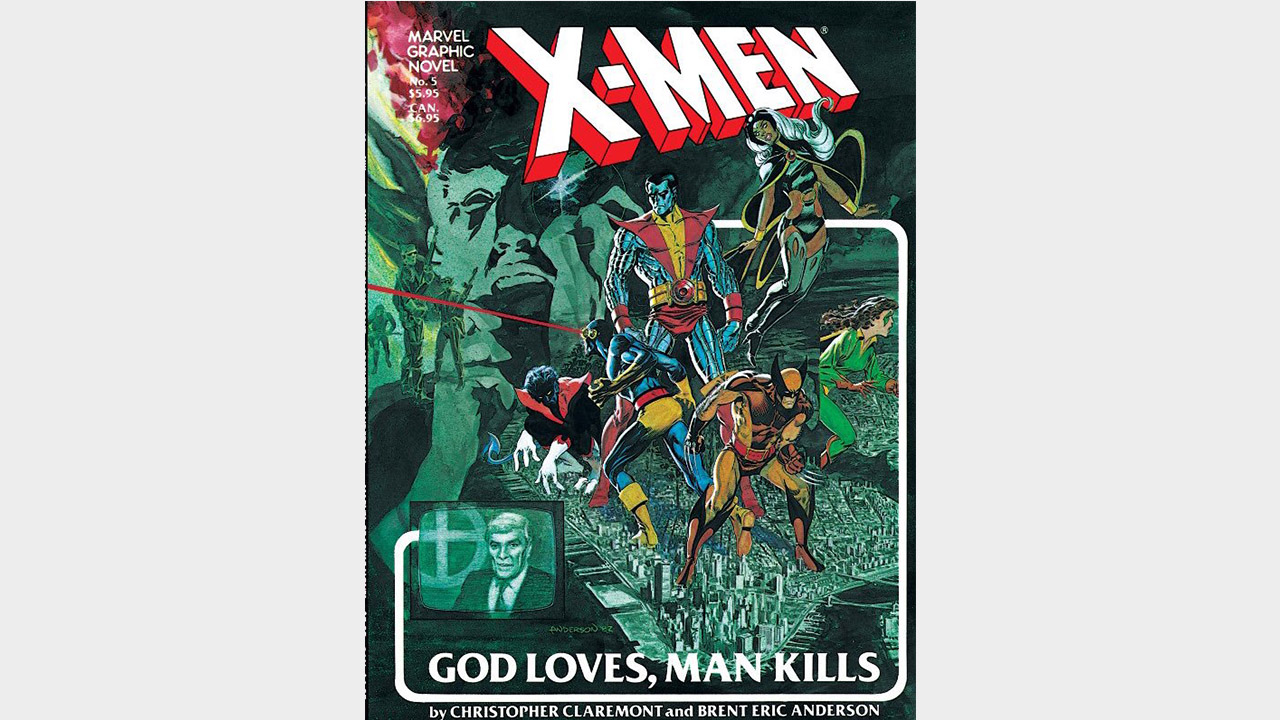
Anyone who claims the X-Men isn’t a metaphor for marginalized people in contemporary times probably hasn’t read X-Men: God Loves, Man Kills (opens in new tab).
Chris Claremont introduces William Stryker, a reverend with a big, bigoted bone to pick with mutantkind. The charismatic leader convinces his followers to take humanity into their own hands and the X-Men have to team up with Magneto to stop him. More than ever before, this is ground zero for the metaphor that fuels the X-Men. It’s not just that they’re feared and hated. This is a story about what happens when the world emboldens hatred and enables the worst parts of humanity.
And it would be a crime to not mention the incendiary artwork of Brent Anderson. While he’s probably not one of the first names you think of when talking about X-artists, his output here is stellar. There’s unnerving darkness to the proceedings that fits the more mature tone, and Xavier’s nightmarish visions are rendered with staggering intensity.
Buy: Amazon (opens in new tab)
4. ‘E is for Extinction’ – New X-Men #114-116
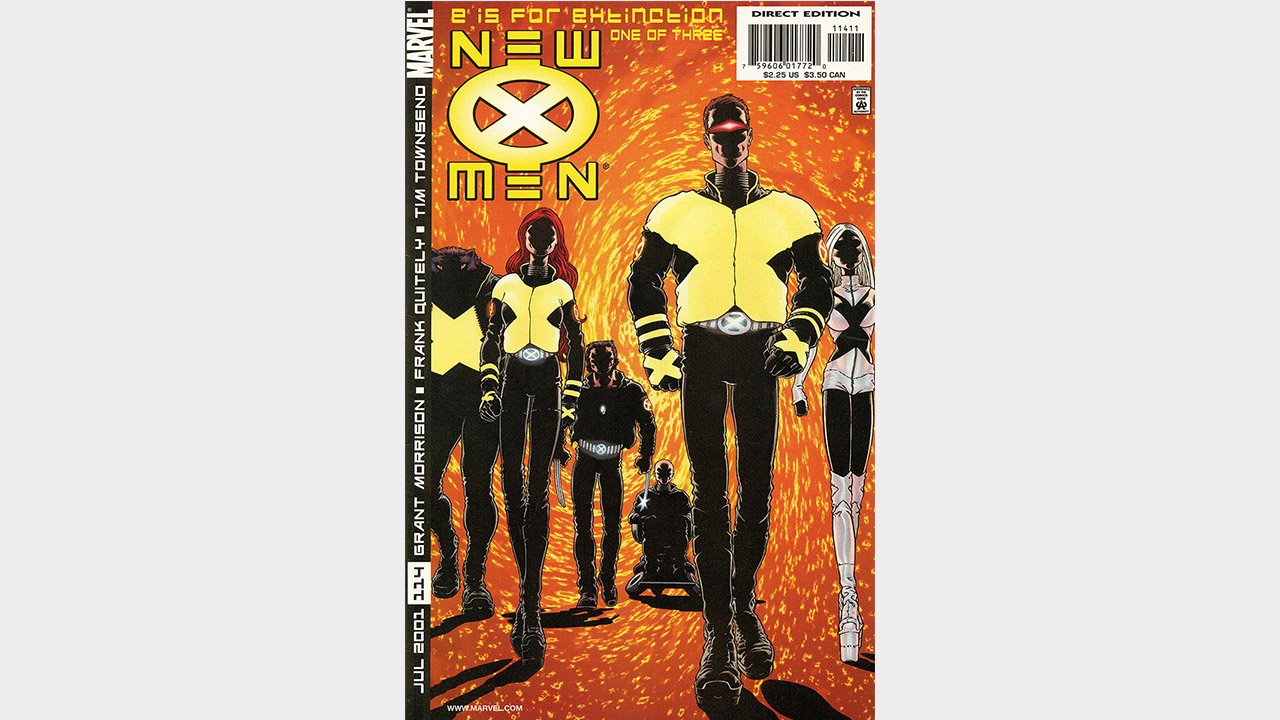
Just as their first film slashed its way into theaters and turned everything we thought about superhero movies on its head, Grant Morrison’s team-up with Marvel’s merry mutants a year later provided a similar reinvigoration for the X-Men in comic books.
Morrison changed everything by twisting the tropes they knew had a little bit more to give. With artist Frank Quitely, they redesigned the team’s costumes for the new millennium – favoring black leather over gaudy spandex – and canonized the idea of secondary mutations that further empower the mutants who undergo them, while paring down the core team to a more tenable and iconic few.
The result is the beginning of an era of new growth for the X-Men that still saw Morrison fall into the patterns that define the X-Men specifically. Over time, the cast grew and the soap-operatic adventures filtered through Morrison’s brand of new psychedelia, allowing them to comment on the legacy of superhero comic books’ greatest team with their work.
‘E is for Extinction (opens in new tab) ‘ is a reminder that the potential these characters have is limitless – and that’s why they have endured.
Buy: Amazon (opens in new tab)
3. House of X/Powers of X
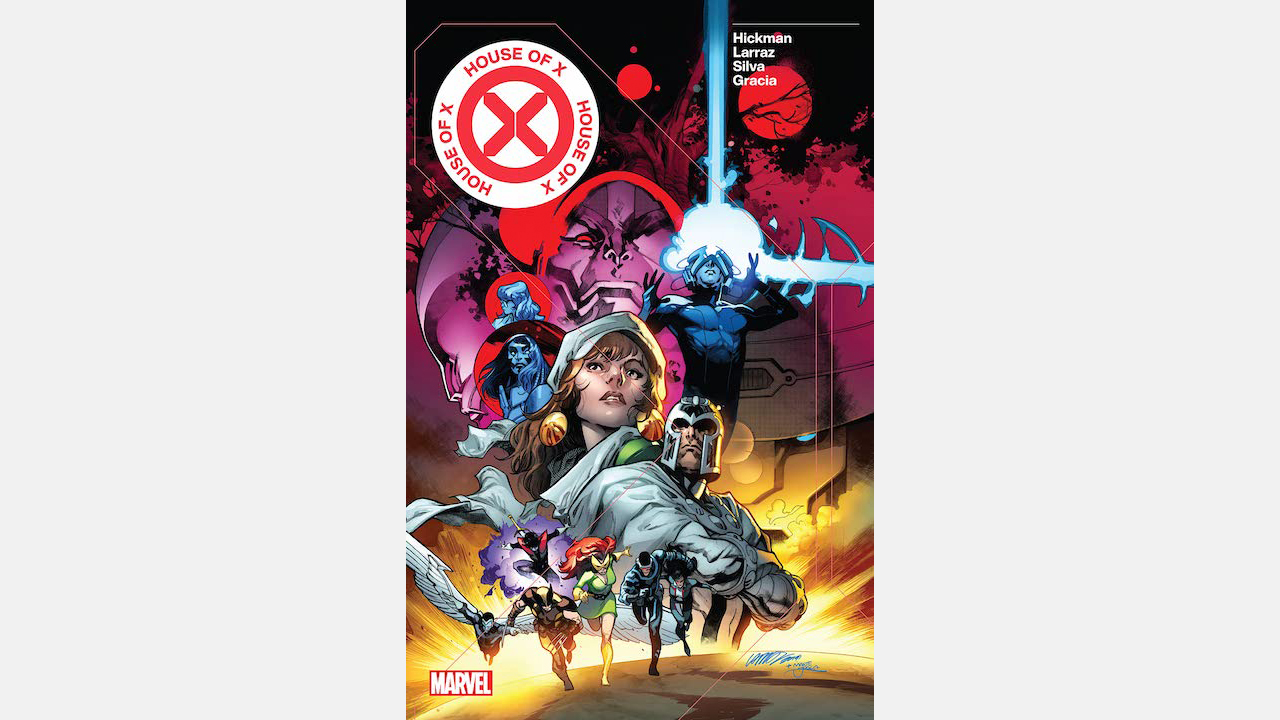
This might feel like a high placement for the newest story on the list, but it feels almost impossible to overstate how thoroughly Jonathan Hickman, Pepe Larraz, and R.B. Silva reinvigorated the X-Men franchise with House of X/Powers of X. It is arguably the biggest sea change we’ve seen Marvel’s merry mutants go through since Giant-Size X-Men #1.
Revelations about Moira MacTaggart’s many lives, the establishment of Krakoa as a mutant homeland, and the Resurrection Protocols made the world sit up and take notice of the X-Men again in our world and theirs. Hickman’s knack for heady sci-fi gave the characters a direction for the first time in years, ending an era of stops and starts that failed to capitalize on the fact that at one point the X-Men ruled Marvel’s publishing line.
In a way, Hickman throws the gauntlet down to the rest of the Marvel Universe, creators, fans, and characters alike, with a single line from Magneto: «You have new gods now.»
We do – and it’s never been a better time to be an X-Men fan.
Buy: Amazon (opens in new tab)
2. ‘Days of Future Past’ – Uncanny X-Men #141-142
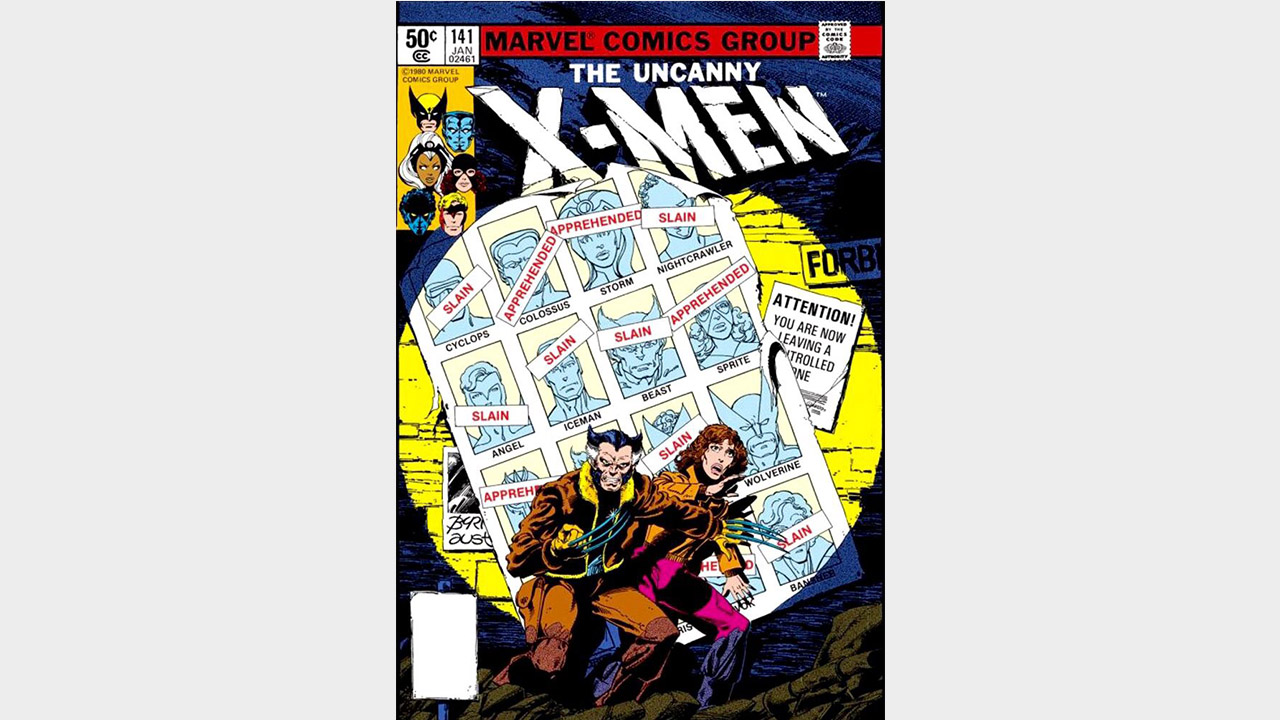
Penciler John Byrne deserves most of the credit for this one, as writer Chris Claremont simply didn’t want to do another story with Sentinels, no matter how much Byrne wanted to draw them.
So while the artist admits that the plot is slightly borrowed from an episode of Doctor Who, ‘Days of Future Past (opens in new tab) ‘ still stands as two men at the height of their creative prowess finding opportunity and potential in these now timeless characters.
It’s impossible to deny the craft in this story. It’s only two issues long, but the sense of dread and hopelessness in the face of this possible future is palpable. Kitty Pryde walking through a graveyard that’s filled with her friends while all the odds are stacked against her – that’s the kind of image that sticks with the audience and the character.
Claremont and Byrne were experts at making readers feel like it all might be over at any time for the X-Men, and that’s part of what makes their team-up so great – and it’s also why ‘Days of Future Past’ stands as one of the most well-known and best-loved X-Men stories ever, even inspiring a film adaptation.
Buy: Amazon (opens in new tab)
1. ‘Dark Phoenix Dinastía’ – Uncanny X-Men #129-138
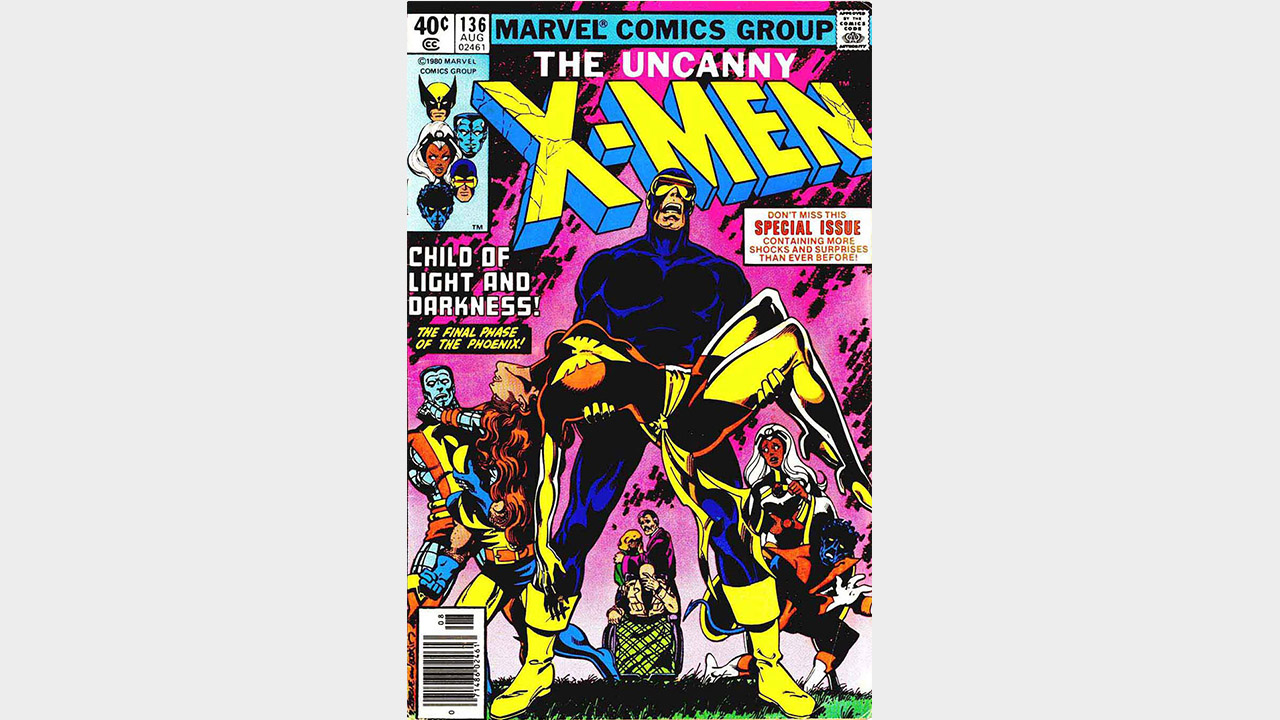
If there’s one story that defines the X-Men above all others, it’s ‘The Dark Phoenix Saga (opens in new tab),’ in which Chris Claremont and John Byrne’s somewhat tumultuous creative relationship begins to come to an end with one of the greatest superhero stories ever told.
Claremont’s soap opera-style plotting and characterization come to the forefront as readers get a front-row seat for the corruption of Jean Manada. Kitty Pryde joins the team. The Shi’Ar, Lilandra, and the Imperial Guard are added to the mythos thanks to Dave Cockrum – suddenly, the X-Men’s world has bloomed into something much bigger.
The effects of this story can’t be overstated. Jean’s sacrifice to defeat the Dark Phoenix would define the X-Men forever, and while the Phoenix has a habit of rising from the ashes, it never lessens the impact of her initial death.
Jean was more than a friend, lover, or teammate to these characters. She’s also the first of many incredible women who would join the X-Men, and for issues to come, we’d get to see how much she was really the lynchpin of the team up to that point.
Buy: Amazon (opens in new tab)

